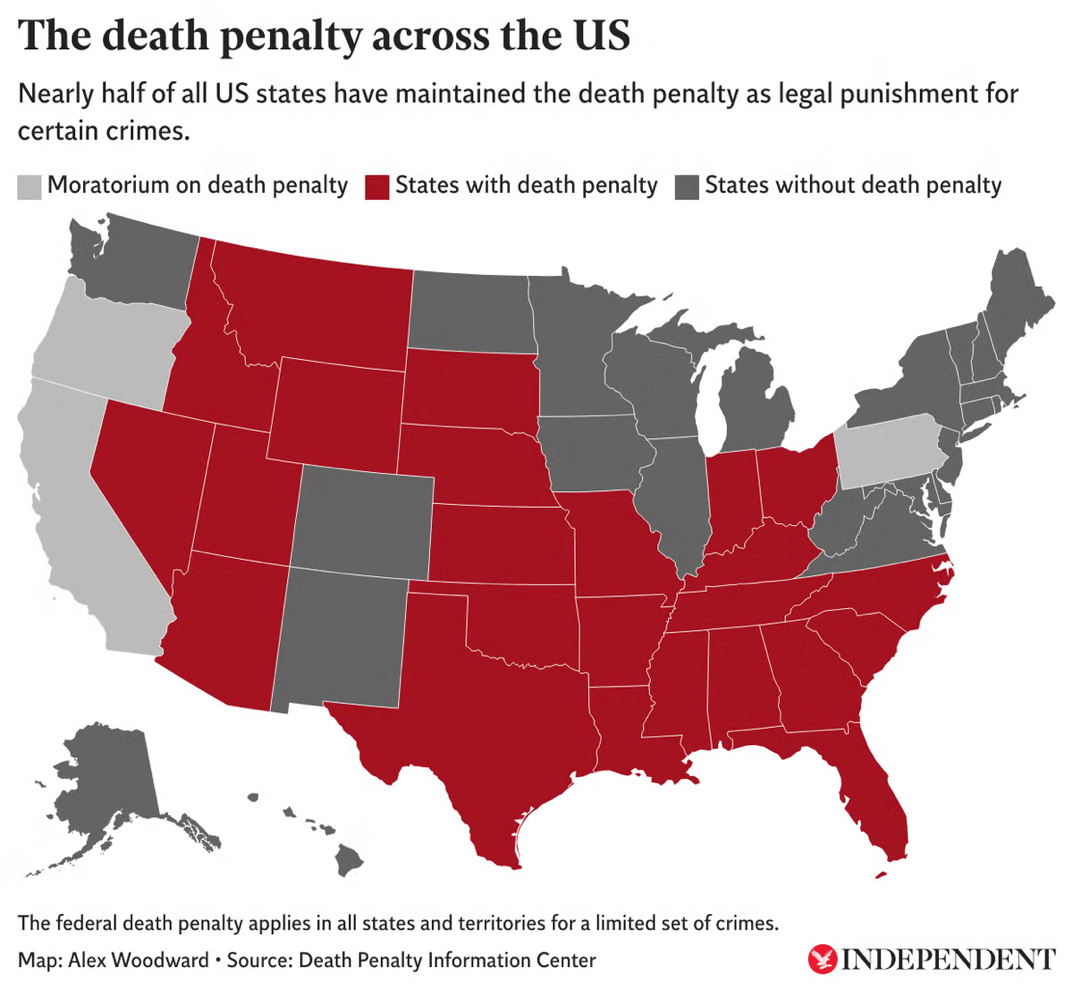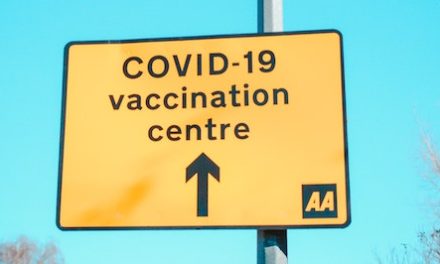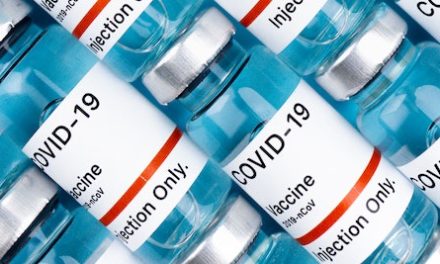Abstract
Death penalty remains one of the most contentious forms of sentencing in modern legal debate. This paper explores multifaceted aspects of death penalty sentencing, focusing on the impact of bias and vulnerability on legal outcomes in the United States of America and India. Through a comparative legal methodology and desk-based socio-legal research, this study inspects how factors such as race, religion, caste, and socio-economic background influence the outcomes in death penalty sentencing. In the United States, systemic racial bias and geographical disparities are significant factors which influence sentencing. This bias is magnified by issues such as inadequate legal representation and prosecutorial misconduct, leading to a disproportionate number of Black Americans on death row. However, in India, the caste and socio-economic backgrounds of defendants play a vital role. Lower-caste individuals and those from impoverished backgrounds are more likely to face capital punishment, often due to deficient legal defence and police malpractices. Through analysis of case studies and use of statistical data, this paper highlights the pervasive inequalities in both countries’ legal systems. It underscores the necessity for reforms aimed at mitigating these biases to uphold human rights. The research reveals that in both jurisdictions, the death penalty sentencing is a reflection of wider social prejudice and systemic failures present in society. The study underlines the importance for legal reform, such as enhanced legal representation for vulnerable groups, stricter scrutiny of prosecutorial practices, and greater transparency in the judicial process.
Introduction
The death penalty is a debated form of capital punishment that results in the execution of the accused by state-sanctioned means. The use of the death penalty as a method of criminal punishment dates to as early as the eighteenth-century BCE making it a pillar for most modern legal systems. The death penalty has existed since colonial times in the United States of America (‘US’) – its history is entwined with segregation, slavery, and social reform (Office of United States Attorney ‘Sentencing’, 2023). As of 2022, in US states sparing Alabama, the death penalty can only be recommended by a unanimous vote from the jury, except in cases where the defendant explicitly waives their right to a jury. In the US, the death penalty is only given out for capital offences such as murder, treason, genocide, or the killing or kidnapping of congressmen, the President, or a Supreme Court justice. In India, the death penalty is for offences such as treason, murder, rape leading to death or rape of a child under twelve years old, abetment of suicide for a minor or an insane person, attempted murder by a serving life convict, organised crime resulting in death; mutiny; desertion or aiding desertion, and abetment of social evils such as sati (Project 39A ‘Crimes Punishable by Death’, n.d.). Unlike the jury-based system in the US, the death penalty sentencing in India is based on the decision of a judge. The judgment is usually delivered in a lower court such as a Court of Sessions and is subject to appeals to courts as high as the Supreme Court, and an appeal for a Presidential pardon. Even if the request for a pardon is denied, a writ petition can be filed against this decision based on the order being passed without application of mind, being malafide, being passed on extraneous or entirely on irrelevant considerations, relevant material being kept out of consideration or the order being arbitrary (Code of Criminal Procedure 1973, India, sections 367-370).
The use of capital punishment or death penalty is a highly contested issue mainly due to ethical and moral concerns. The primary, most popular concern surrounds the violation of human rights. This paper discusses a multitude of factors that affect death penalty sentencing, such as bias and vulnerability, which can present as unconscious flaws in legal systems around the world. Bias is defined as a ‘pre-existing inclination or prejudice for or against someone or something’ (Legal Information Institute ‘Bias’, n.d.), and can exist in both the legal system and its participants, both consciously and subconsciously. Racial bias is a form of prejudice that generally includes negative emotional reactions to members of a group, acceptance of negative stereotypes, and racial discrimination against individuals, leading to violence in some cases. Caste is defined as ‘a closed social stratification system in which people inherit their position and experience little social mobility’ (Libretexts ‘Caste Systems’, 2021). Vulnerability is defined as the ‘conditions determined by physical, social, economic, and environmental factors or processes which increase the susceptibility of an individual, a community, assets, or systems to the impacts of hazards.’ (UNDRR ‘Vulnerability’, 2007). The defendant’s vulnerability in a legal setting can aid adjudicators in understanding the context for potential sentencing, akin to considering their socio-economic background. Socio-economic background is defined as a combination of an individual’s income, occupation and social background. Socio-economic background is a key determinant of success and future life chances’ (The Open University ‘Socio-economic background’, n.d.). The research paper will discuss the effect of religion, caste, and race on sentencing while examining whether those receiving the sentences are from a marginalised socio-economic background.
Research Questions
How does vulnerability of background have an effect on death penalty sentencing in the US and India?
Within this broad research question, the authors will be focusing on the following two specific questions:
- Is religious, racial, and caste-based bias affecting death penalty sentencing?
- Are those from marginalised socio-economic backgrounds primarily on the receiving end of the death penalty sentence?
Methodology
This paper employs desk-based socio-legal research methodology and comparative legal methodology to compare death penalty sentencing in the US and India. These are internationally prominent countries with legal precedents and have sufficient data regarding the death penalty. Both countries have been proven to be susceptible to bias through past cases and are comparable as both countries use the common law system. These jurisdictions have also been selected due to the authors’ familiarity with these legal systems. Vulnerability and social equity have been spotlighted in recent years due to rising social protests against systemic discrimination targeting minorities. This paper investigates the socio-legal aspects of death penalty sentencing using desk-based research methodology, and thus contributes to the contextual understanding and humanisation of the subjects of legal research. The limitations of this paper are based upon the authors’ use of secondary data. The inherent bias towards the abolishment of the death penalty in secondary sources may be conveyed through and reflected in this paper. Specifically, a majority of the research for India was conducted via multiple reports and studies by the same organisation which could have led to an inherent bias in the data. While allowing for a focused and concise comparison, the consideration of death penalty sentencing in only two countries also considerably narrows the scope of the paper.
I. Systemic Biases within the Legal System
United States
Systemic bias is a prevalent issue within the US. In Philadelphia, among Black defendants who kill white victims, a study has found that the more ‘Black’ a defendant is perceived to be, the more likely that person is to be sentenced to death (DPIC ‘New Research Examines Racial Stereotypes and the Death Penalty’, 2006). Racial bias can be one factor that mitigates sentencing, but also factors such as geographical location, gender bias, and jury selection.
Geographical location is also vital to sentencing. In the US, certain states do not have the death penalty, such as Alaska, Maine, and Massachusetts. However, southern states including Texas or Florida, and others such as New York and California, do have the death penalty. In particular, Texas is notorious for giving the death penalty. For example, Harris County in Texas has executed 126 prisoners, more than any other county in the USA (DPIC ‘No Executions in the “Capital of Capital Punishment” for First Time in 30 Years’, 2017). Thus, whether a defendant gets the death penalty or not in the USA varies from state to state. A good example of this is Duane Buck’s case in Texas (Chammah, 2017). Duane Buck was sentenced to death in 1997 for double murders. His case was notable due to racially biased testimonies during his trial. A psychologist, Dr. Quijano, stated that Buck was likely to be dangerous in the future because he was Black. Due to the cultural inclination towards capital punishment in Texas, especially influenced by local politics, local prosecutors are more likely to seek the death penalty. In contrast, New Jersey abolished the death penalty in 2007. The state’s political opinion on capital punishment was that it was neither effective nor just. If Buck’s case had been tried in New Jersey after 2007, he would not have faced a death penalty sentence and would have likely faced a life sentence. In certain geographical areas, prosecutors are more prone to seeking the death penalty than others. For example, former Philadelphia District Attorney Lynne Abraham sought the death penalty in numerous cases, contributing to Philadelphia’s high number of death row inmates. This indicates how the death penalty sentence is administered in such an arbitrary manner.

There can be multiple racial biases throughout the legal system, such as the victim’s race, the jury’s racial composition, and general implicit bias. In McCleskey v. Kemp 481 US 279 (1987), a Black man was sentenced to death for the murder of a white police officer during a robbery. McCleskey’s legal team, as part of his defence, presented a statistical study that showed that Black defendants accused of killing white victims were far more likely to receive the death penalty in Georgia. The US Supreme Court acknowledged the evidence of racial disparities, however, ruled 5:4 against McCleskey, stating that the evidence of systemic racial bias did not prove that discrimination had occurred in that specific case. The court’s decision made it more challenging to use statistical evidence to prove racial bias in individual cases. This case highlighted the pervasive racial disparities in death penalty sentencing and underscored the difficulty of addressing systemic bias within the judicial system, even when such bias is brought to light.
Many cases were brought to light recently regarding discriminatory cases in Alameda County. On April 22nd 2024, District Attorney Pamela Price announced that her office was ordered by a federal judge to review 35 death penalty sentences after new evidence was brought to light of several prosecutors intentionally excluding people due to their religion and race, especially Black and Jewish people from serving on a capital murder trial in 1995. DA Price’s office had discovered handwritten notes of former prosecutors that included discriminatory jury selection tactics, suggesting ‘serious misconduct.’ ‘It’s not limited to one or two prosecutors, but a variety of prosecutors,’ said DA Price, also stating that the newly found evidence shows that people did not receive a fair trial in Alameda County which is why she had ordered the review. In the case of Earnest Dykes, who was convicted and sentenced to death for the attempted robbery of an elderly woman and the murder of her nine-year-old grandson, US District Court Judge Vince Chhabria ordered that the notes be made public. Following discovery, Judge Chhabria wrote that these notes, ‘especially when considered in conjunction with the evidence presented in other cases, constitute strong evidence that, in prior decades, prosecutors from the office were engaged in a pattern of serious misconduct, automatically excluding Jewish and African American jurors in death penalty cases’ (DPIC ‘Federal Judge Orders Alameda County District Attorney to Review 35 Capital Cases Following Disclosure of Prosecutorial Misconduct in Jury Selection’, 2024).
A jury’s racial composition can be extremely important to the sentencing of the case, as studies have shown that all-white or predominantly-white juries are more prone to sentencing Black defendants to death compared to racially diverse juries. Diverse juries tend to deliberate longer and consider a wider range of perspectives, which may lead to more equitable outcomes. This is why some prosecutors often use peremptory strikes to exclude potential jurors of colour, leading to a lack of diversity. This practice introduces bias, as racially homogenous juries can be shown to be more inclined to convict and impose harsher sentences on defendants of colour. The Equal Justice Initiative found evidence of this practice in several southern states, revealing that prosecutors commonly justify the exclusion of Black jurors using seemingly race-neutral reasons that courts frequently accept without scrutiny. A study found in Caddo Parish, Louisiana presented that prosecutors struck 46% of Black jurors compared to only 15% of non-Black jurors (Equal Justice Initiative Report, 2024). The study also noted that the racial composition of the jury significantly affected trial outcomes, no defendants were acquitted with two or fewer Black jurors, whereas 19% were acquitted when five or more Black jurors were present. In Alabama, prosecutors in capital cases used peremptory strikes to remove 82% of eligible Black jurors. This discriminatory practice has continued despite numerous legal challenges and has had a profound impact on the fairness of trials in the state, as it capitalised on jurors’ unconscious or conscious biases against defendants.
Implicit bias is the attitudes or stereotypes that affect our understanding, actions, and decisions subconsciously. In the context of death penalty sentencing, these biases can influence the decisions of judges, juries, and prosecutors, often leading to discriminatory outcomes. Implicit bias among legal professionals has led to prosecutors seeking the death penalty more often in cases concerning Black defendants. A study by the American Psychological Association observed that judges’ sentencing decisions could be influenced by racial stereotypes, leading to harsher penalties for Black and Latino individuals (Steffensmeier and Demuth, 2001).
India
The criminal justice system in India, much like in the United States, often disproportionately affects the poor and marginalised sections of society. A significant lack of information existed about the socio-economic status of death row prisoners and the impact on their families. To address this gap, the Death Penalty India Project was undertaken by the National Law University of Delhi to gather empirical data on these prisoners. A critical question this project asked was: who gets the death penalty in India? Answering this question requires empirical evidence gathered over time. The project aimed to provide a snapshot of the socio-economic status of 373 out of 385 prisoners sentenced to death. Although changes in individual cases could alter the findings, the collected data offers an initial understanding that moves beyond intuition to empirical reality. The socio-economic and age profiles of death row prisoners in India reveal significant disparities and challenges, underscoring the need for regular data collection and analysis to provide a clearer picture and inform the debate on the death penalty in the country. Data from interviews with prisoners and their families show that as cases progress from the High Court to the Supreme Court and mercy petitions, the proportion of Scheduled Castes and Scheduled Tribes (SC/STs) and religious minorities increases. As cases progress through the judicial system, the proportion of Scheduled Castes, Scheduled Tribes (SC/ST), and religious minorities increases, while the representation of the general category decreases. For instance, SC/STs comprise 27.5% at the Supreme Court stage, up from 20.7% at the High Court stage, and rise to 42% at the mercy stage (Death Penalty India Report, 2016).
Similarly, religious minorities increased to 29.4% at the Supreme Court stage, compared to 19.6% at the High Court stage. Educational data shows that 54.9% of prisoners are economically vulnerable and lack secondary education, with 21.7% having had no schooling at all. Economic vulnerability is highest among SC/STs (85.4%) and religious minorities (76%), compared to 64.4% in the general category (Death Penalty India Report, 2016). These findings underscore systemic biases in the criminal justice system that disadvantage marginalised groups, limiting their participation in legal proceedings. In India, targeting those coming from marginalised communities starts before the formal legal proceedings, with the police. The police are not known as the guardians of the law as they should be. Instead, they are known to target the poor using extra-judicial means of interrogation. Cases with a potential death sentence are very often pinned on the poor or those from backward classes, with evidence produced via forced confessions. Over 97% of former judges interviewed by Project 39A believe torture is a prevalent practice (Matters of Judgment, 2017). A Supreme Court judge who delivered four death sentences said: ‘When it comes to crime, they [the police] will pick up small men and adopt third-degree methods, to make them accused and elicit their confessions, whether they have committed the crime or not’ (Matters of Judgment, 2017, p. 27). Another example of this is the Ryan International School Murder Case, where a seven-year-old boy was murdered, a bus conductor, Ashok Kumar was wrongfully accused of the crime and taken into police custody. Less than 24 hours later, they had obtained a confession from him. Kumar later claimed that he was tied up, hung upside down, physically abused, given electric shocks, and even injected with sedatives during his time in police custody. He was later released due to a lack of evidence. For more than a week after being released, he suffered from a high fever along with severe body and chest pain due to the torture he endured in custody for a crime he did not commit (Wire Staff, 2017). On the other end is Vedant Agarwal, an underage drunk driver who took two lives with his rash and negligent driving of his father’s Porsche. However, due to his father being an influential builder, he received bail within 15 hours of the accident. The bail conditions were writing a 300-word essay on the effect of road accidents and their solutions, learning the traffic rules and submitting a report, going through counselling, and his parents ensuring he stayed away from bad company (Online Desk Agencies, 2024).
II. Economic Disparities and Legal Representation
United States
One of the most significant factors in winning a court case is the quality of legal representation. The US, despite being one of the richest nations in the world, hosts great income inequality. Due to legal fees being large costs, citizens who earn a lower income are unable to be represented by adequate lawyers. Glenn Ford was convicted of murder in Louisiana, in 1984, and was on death row for 30 years. Glenn Ford was unable to afford a lawyer and was assigned two lawyers by the State of Louisiana. The first was an oil and gas lawyer, who had never tried a case, criminal or civil, in front of a jury. The second was a recent law school graduate who was employed at an insurance firm. Due to the defence’s inexperience, the prosecution immediately used a peremptory challenge capacity to remove any African Americans from the jury. Ford was sentenced without a murder weapon presented, and with evidence from confidential informants withheld. An inadequate defence doomed Ford to a lifetime on death row. Growing income inequality in the US is making this justice gap worse, as public funding available for legal aid has decreased. Lower-income households are more likely to face legal problems, especially in the US, as those living in poverty are unable to access legal aid or pay legal fees. Defence Attorney Ron Mock, who represented Gary Graham in Texas was found to have provided inadequate representation, as Mock failed to investigate Graham’s alibi and the reliability of witnesses properly. His lack of preparation contributed to Graham’s conviction. Mock’s lack of effort was due to Texas’ system paying indigent clients very little, discouraging case preparation, and effective defence. In the aftermath of the trial, subsequent appeals revealed that a competent investigation would have uncovered significant mitigating factors that could have influenced the jury’s decision. Indigent defendants often face major system issues in assigning them adequate defence. Many states such as Louisiana have system issues, where public defenders have faced budget cuts leading to waitlists for representation, delaying justice for many defendants. In Alabama, attorneys representing indigent defendants in capital cases were paid as little as $20 per hour for out-of-court work, with caps on total compensation. This led to minimal investigation and preparation, as seen in numerous overturned convictions due to ineffective counsel (Cohen, 2014).
India
As in the United States, ineffective and poor legal representation has played a key role in death penalty sentencing in India. In ‘Matters of Judgment’, another study conducted by Project 39A, retired judges were provided with three hypothetical death penalty cases, with individualised sentencing factors such as socio-economic background, mental health, and childhood. The majority of the judges did take such factors into consideration when deciding against the death penalty in such cases (Matters of Judgment, 2017). Yet, most of those on death row in India have the exact background that led the judges to decide against a death penalty. Around 60% of death row convicts in India come from backward classes or scheduled castes and scheduled tribes and 33% of them come from religious minorities. 27.3% of those given the capital sentence had no parental figure, 52.3% of them were abused as children, 56.8% had at least one parent using substances, 63.6% of prisoners experienced three or more traumatic events, and 89.8% faced three or more adverse events such as poverty or social discrimination (Srinivasan, 2022). Then why were they given the death penalty when senior judges believed that these factors, when considered, did not warrant a death penalty? These facts were never presented in court.
A troubling observation from the Death Penalty India Report is that 18 prisoners claimed to be under 18 at the time of their crimes. However, due to poor documentation, these claims were complex to verify. Age is a significant factor in sentencing in India, especially in determining the punishment phase after establishing guilt. Young offenders, seen as having potential for reform and being vulnerable, should not face the same severe punishment as adults. Similarly, the extremely old, who do not pose a societal risk, should not be sentenced to death. Often, these prisoners could not present this issue effectively in trial courts due to inadequate legal representation. Those of a lower socio-economic strata can never afford legal counsel that could truly help them. Even the free counsel provided to them by courts or volunteer organisations are either not experienced or skilled enough to handle such cases or do not put enough effort into it due to the case being pro bono. Lack of good legal representation is virtually endemic in India. For example, in 2015, a woman who was a victim of domestic abuse applied to file a case against her husband. She was directed to Mumbai District Legal Aid Services, an organisation mandated to provide free legal assistance. The legal aid lawyer she received charged her small amounts regularly and never showed up at the hearings. She was quoted saying: ‘The lawyer they gave me keeps asking for a little money every time. She scolds me and asks if I expect her to help for free.’ Despite the police being required to inform the convicts about the availability of legal aid, which ensures they socially and economically receive legal counsel for free, they often neglect their duties. Sandeep Nandeshwar, a senior lawyer, was quoted saying: ‘The police do not take the initiative to connect people to legal aid, and if a woman or a Dalit shows up, they are even more unlikely to get guidance.’ Another lawyer claimed that women often need to go through six or seven lawyers before they find one who can do their case justice (Johari, 2018). Problems with legal aid exist even in the apex court. An internal audit of their legal services committee revealed that delays and long processes as a result of bureaucracy meant people were essentially denied this right under Article 39A of the Constitution. Due to issues like this, the audit also found that the Supreme Court Legal Services Committee (SCLSC) was massively underutilised (Project 39A, ‘Legal Aid’, n.d.). In 2022, even the Supreme Court Chief Justice of India, Justice UU Lalit, was seriously concerned about the competence and quality of the free legal aid provided to death row convicts. The court saw inconsistencies in the way the defence counsel approached the case and flagged the legal assistance provided to the death row convict as ‘below average.’ The court emphasised that ‘legal aid not just for namesake, should be effective, not a sham’ (Jain and Jain, 2022). In fact, out of 88 death row convicts interviewed by Project 39A between 2016 and 2018, 21.6% were later acquitted, with 37.5% receiving commuted sentences (Srinivasan, 2022). This clearly portrays a failure on the part of the justice system, given that over 50% of death row prisoners across five states were incorrectly given the death penalty by a lower court due to the lack of effective legal counsel. The traditionally marginalised also do not have the power to bring attention to their cause; they do not have anyone in power to support them. Even in today’s age of social media, a majority of such cases fall upon deaf ears.
Conclusion
Religious, racial, and caste-based biases significantly influence sentencing in many judicial systems worldwide. Our research shows that studies and reports have consistently shown that individuals belonging to a racial or religious minority group or those from a lower caste background often receive harsher penalties compared to individuals not from such backgrounds. This disparity can be attributed to various factors, including deep-seated prejudices, socio-economic disparities, and systemic discrimination within legal institutions. Research on the United States indicates that Black people are more likely to be arrested, charged, and sentenced to longer prison terms than white individuals for similar biases. Similarly, in countries like India with a pronounced caste system, lower-caste individuals and religious minorities frequently face prejudiced treatment, leading to unfairness and inequality in sentencing. Research on India shows that economic vulnerability, the caste system, and religion continue to influence societal attitudes, access to opportunities, and interactions with the justice system. These factors affect economic opportunities, educational access, and social status, thereby shaping individuals’ paths into the criminal justice system. Regular data collection is crucial to inform our understanding about the administration of the death penalty in India and the United States, ensuring fairer outcomes for all prisoners. Addressing the biases in the system requires comprehensive legal reforms (informed by data), and anti-discrimination training for judicial officers. This is necessary to ensure that sentencing is equitable and fair for all individuals, regardless of their religious, racial, or caste background.
Bibliography
Aarefa Johari, ‘How well do India’s free legal aid services work? Not nearly well enough’ (Scroll.in, 19 May 2018) <https://scroll.in/article/877225/how-well-do-indias-free-legal-aid-services-work-not-nearl y-well-enough> accessed 29 June 2024.
Akshat Jain, ‘Legal aid not just for namesake, should be effective, not a sham’: Why SC freed death row convict’ (ThePrint, 19 October 2022) <https://theprint.in/judiciary/legal-aid-not-just-for-namesake-should-be-effective-not-a-sha m-why-sc-freed-death-row-convict/1172641/> accessed 29 June 2024.
Andrew Cohen, ‘Freedom After 30 Years on Death Row’ (The Atlantic, 11 March 2014) <https://www.theatlantic.com/national/archive/2014/03/freedom-after-30-years-on-death-row/284179/> accessed 01 July 2024.
Darrell Steffensmeier and Stephen Demuth, ‘Ethnicity and judges’ sentencing decisions: Hispanic-Black-White comparisons’ (2001) 39(1) Criminology 145-178.
Death Penalty Information Center, ‘Alabama Court of Criminal Appeals Categorically Bars Review of Racial Bias in Capital Jury Selection’ (DPIC, 28 May 2024) <https://deathpenaltyinfo.org/news/alabama-court-of-criminal-appeals-categorically-bars-review-o f-racial-bias-in-capital-jury-selection >accessed 10 June 2024.
Death Penalty Information Center, ‘Federal Judge Orders Alameda County District Attorney to Review 35 Capital Cases Following Disclosure of Prosecutorial Misconduct in Jury Selection’ (DPIC, 26 April 2024) <https://deathpenaltyinfo.org/news/federal-judge-orders-alameda-county-district-attorney-to-review-35-capital-cases-following-disclosure-of-prosecutorial-misconduct-in-jury-selection#:~:text=On%20April%2022%2C%202024%2C%20Alameda,capital%20murder%20trial%20in%201995> accessed 10 June 2024.
Death Penalty Information Center, ‘History of the Death Penalty’ (DPIC, n.d.) <https://deathpenaltyinfo.org/facts-and-research/history-of-the-death-penalty> accessed 12 June 2024.
Death Penalty Information Center, ‘No Executions in the “Capital of Capital Punishment” for First Time in 30 Years’ (DPIC, 05 December 2017) <https://deathpenaltyinfo.org/news/no-executions-in-the-capital-of-capital-punishment-for-first-time-in-30-years> accessed 12 June 2024.
Death Penalty Information Center, ‘STUDIES: Racial Bias in Jury Selection’ (DPIC, 18 August 2015) <https://deathpenaltyinfo.org/news/studies-racial-bias-in-jury-selection> accessed 11 June 2024.
Equal Justice Initiative, ‘Illegal Racial Discrimination in Jury Selection Documented in Caddo Parish, Louisiana’ (EJI, 24 August 2015) <https://eji.org/news/study-documents-racially-biased-jury-selection-caddo-parish-louisiana/> accessed 12 June 2024.
Janelle Griffith, ‘Judge orders review of Alameda County death penalty cases over potential exclusion of Black and Jewish jurors’ (NBC News, 13 April 2024) <https://www.nbcnews.com/news/us-news/alameda-county-jurors-Black-jewish-death-penalty-review-rcna148934> accessed 22 June 2024.
Legal Information Institute, Cornell Law School, ‘Bias’ (Legal Information Institute, n.d.) <https://www.law.cornell.edu/wex/bias#:~:text=A%20bias%20is%20to%20exhibit,or%20against%20someone%20or%20something> accessed 20 June 2024.
Libretexts, ‘8.1C: Caste Systems’ (Social Science Libretexts, 20 February 2021) <https://socialsci.libretexts.org/Courses/Solano_Community_College/SOC_002%3A_Social_Issues_and_Problems/08%3A_Global_Stratification_and_Inequality/8.01%3A_Systems_of_Stratification#:~:text=a%20Virginian%20Plantation-,Caste%20Systems,position%20and%20experience%20little%20mobility> accessed 22 June 2024.
Maurice Chammah, ‘The Case of Duane Buck’ (The Marshall Project, 22 February 2017) <https://www.themarshallproject.org/2016/04/20/what-you-need-to-know-if-the-supreme-court-takes-the-case-of-duane-buck> accessed 29 June 2024.
National Law University Delhi, Death Penalty India Report (National Law University, Delhi Press 2016)
Office of the United States Attorney (US Department of Justice) ‘Sentencing’ (USAO, 12 May 2023) <https://www.justice.gov/usao/justice-101/sentencing#:~:text=The%20death%20 penalty%20can%20 only,or%20a%20Supreme%20Court%20justice> accessed 20 June 2024.
Online Desk, Agencies, ‘Pune Porsche accident: Minor gets bail 15 hours after knocking due to death; told to write 300-word essay’ (The New Indian Express, 20 May 2024) <https://www.newindianexpress.com/nation/2024/May/20/pune-porsche-accident-minor-g ets-bail-15-hours-after-knocking-duo-to-death-told-to-write-300-word-essay> accessed 24 June 2024.
Project 39A, ‘Crimes Punishable by Death’ (Project 39A, n.d.) <https://www.project39a.com/resources-crimes-punishable-by-death> accessed 24 June 2024.
Project 39A, ‘Legal Aid’ (Project 39A, n.d.) <https://www.project39a.com/legal-aid> accessed 29 June 2024.
Project 39A, Matters of Judgment (National Law University Delhi Press 2017) <https://static1.squarespace.com/static/5a843a9a9f07f5ccd61685f3/t/64af9a1661768f0f50 3e5183/1689229978317/MattersofJudgment.pdf> accessed 22 June 2024.
Rukmini Srinivasan, ‘Condemning The Condemned: How India’s Death Penalty Targets The Vulnerable’ (Article 14, 10 December 2022) <https://article-14.com/post/condemning-the-condemned-how-india-s-death-penalty-target s-the-vulnerable-6393ef5cd2e01> accessed 15 June 2024.
The Code of Criminal Procedure, 1973 (India Code, n.d.) <https://www.indiacode.nic.in/bitstream/123456789/15272/1/the_code_of_criminal_proce dure,_1973.pdf> accessed 22 June 2024.
The Open University Equality and Diversity, ‘Socio-economic Background’ (Open University, n.d.) https://www5.open.ac.uk/equality-diversity/content/socio-economic-background#:~:text=Socio %2Deconomic%20background%20relates%20to,success%20and%20future%20life%20chances.> accessed 22 June 2024.
United Nations Office for Disaster Risk Reduction, ‘Vulnerability’ (UNDRR, 30 August 2007) <https://www.undrr.org/terminology/vulnerability#:~:text=The%20conditions%20determined%20 by%20physical,to%20the%20impacts%20of%20hazards> accessed 20 June 2024.
Wire Staff, ‘Ryan School Murder: Conductor Alleges Police Tortured Him, Gave Him Electric Shocks’ (The Wire, 24 November 2017) https://thewire.in/politics/ryan-school-murder-bus-conductor-alleges-torture > accessed 24 June 2024.




